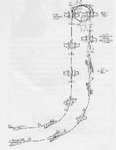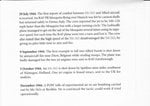Good point on the centrifugal jet engines: they were indeed the better choice that early on.
I wonder what this is based on. Never intended for front-line service?? They were working on it for 4 years straight and they knew it would be the main engine of the Me 262 since 1942.
Let me also add that the Jumo 004 was improved at the end of 1944 reaching an overhaul time of 25 hours which was not all that bad. Also it would get a regulator like on the BMW 003 which would take care of most of the accidental flame outs.
So we should also take this into account when judging the Me 262: the 1944 or the 1945 version?
Kris
I think that the engineers did a great job within the constraints of the resources they were allocated. They were starved of nickel required to produce a durable engine.
Aluminium-coated mild steel for the flame tubes was very innovative, but also very limited in terms of the conditions which were necessarily thrown at it.
The statement "never intended for front line service" was based on the fact that the engineers would have wanted better materials and more time to sort out the engine, but time was running out.
Last edited:


